Ford focuses on refinement for 2014
By John Gilbert
DETROIT, MI. — Ford Motor Company didn’t need any sweeping style changes for its cars and trucks for 2014, not after redesigning virtually its entire model line in the last two years. Therefore, Ford has turned its attention to refining its fuel-efficiency and technology leadership and to deal with the seeming contradiction that customer survey complaints for balky complexity of certain technology features for 2013 models were countered by unprecedented customer satisfaction numbers and high “take rates” on those same technology items.
Ford officials discussed those issues while showing off the new 2014 vehicles at the annual media preview at its Dearborn vehicle development facility in the last week of June. Included among the newest vehicles is a new Tremor version of the popular F-150 pickup line — a regular-cab model with special trim and a 365-horsepower EcoBoost V6.
The success of Ford’s EcoBoost technology is a major part of Ford’s new arsenal of engines, with those displacing 3.5, 2.0, and 1.6 liters adding turbocharging to earn the EcoBoost designation; they perform with the power of larger engines while getting the significantly better fuel economy of smaller displacements. This fall, Ford will unveil its unique 3-cylinder, 1.0-liter EcoBoost engine in the Fiesta subcompact.
Since getting a preliminary test drive in new models is a prime lure to get the media to attend this event, we all eagerly hustled out onto one of Ford’s test tracks to try the 1.0 EcoBoost, but we were told it won’t be out until this fall. We had to be satisfied by running the 1.6 EcoBoost Fiesta ST around an autocross course, which was impressive indeed. Read more
Nissan Versa hits high Note
By John Gilbert
Nissan is expanding its popular Versa subcompact line by adding a new Note, with a more versatile wagon-like shape to take on top segment competitors. Combining the Sentra and the Sentra Note, it would appear Nissan has the subcompact segment covered, chapter and Versa. To coin a phrase.
The Nissan Versa is like a successful singer in the choir of subcompacts, able to carry a tune but preferring to blend into the harmony than to stand out as a solo act. Maybe that subtlety has helped the Versa lead the segment in sales, but its new member appears much more eager to grab the spotlight and hit all the high notes.
Honda has its versatile subcompact with the Honda Fit, competing with the Versa sedan, and Nissan doesn’t apologize for going after the Fit’s versatility with the wagon-back Note. The Hyundai Accent and Kia Rio both offer sedans and wagon-style variations, and Ford’s Fiesta also has a turned up rear that adds to utility, while the Mazda5 is a similarly contoured mini-minivan.
If those competitors sing well as small family haulers, Nissan strikes back by adding the Note.
Facing the still-recovering economy, Nissan paid strict attention to two key factors that motivate subcompact buyers — sticker price and fuel economy — at every step of developing the Note.
The base S is the only Note with a 5-speed manual transmission, and starts at $13,990, which is $680 less than the previous base model Versa. The S with CVT starts at $15,240; the S-Plus is at $15,990; the SV with Convenience package starts at $16,530; the SV with SL package at $17,690; and the top of the line SV-SL-Tech model opens at $18,490.
The package upgrades add, by steps, different features, including Bluetooth, leather steering wheel cover, rear monitor, upgraded audio, heated front seats, and surroun-view monitor plus navigation, among other things, but in each case, the Note starts with a well-equipped base at a price that ranks less than existing Versas. Read more
Kia rides Cadenza into luxury category
By John Gilbert
Niche marketing, they call it, and auto manufacturers build all manner of vehicles aimed at specific niches. Kia is no different, successfully filling the most popular and inexpensive segments with the subcompact Rio, compact Forte, quirky Soul, classy midsize Optima, and a pair of SUVs — the compact Sportage and midsize Sorento.
But the Korean company is keenly aware of how lucrative the luxury and near-luxury segments have become, and also that it has nothing in those upscale brackets. And now it does.
For 2014, Kia is introducing the Cadenza as its first serious venture into the mid-luxury market. We don’t know what the word Cadenza means in Korean, if anything, and surely Kia will have to withstand the suggestion that adding an “r” it might turn it into a Credenza. Bedroom furniture notwithstanding, the Cadenza is a car that can stand on its own merits as a good idea at first glance, which becomes better upon further review.
Kia made an abbreviated try at a high-end sedan, with the previously discontinued Amanti, which sounded more like a fancy men’s suit than a piece of furniture, but the Cadenza is an entirely different vehicle. It has as much sporty performance as luxury in its character, and plenty of both in its streamlined marketing approach, which will be out by mid-June as only one Cadenza, with one model that can be selected in either of two trim levels. The Luxury model starts at $38,900, and the same car with the Technology package starts at $41,900.
Either way, the car comes fully equipped, and leaves a first impression of, well…surprise. After all, Kia has enjoyed a resurgence over the last three years, by carving a niche of economy and sporty-economy cars, and you normally don’t expect to find these luxury features in a Kia, by any name.
Lexus IS 250, 350 hit elusive high mark
By John Gilbert
BROOKLYN, MICH. — Every builder of a sports sedan hopes it might be comparable to the legendary BMW 3-Series. Some have come close, most haven’t. Some have missed by a mile. It may well be, however, that Lexus has just found the Holy Grail of sports sedans for 2014, with the IS 250 and IS 350.
Lexus assembled some of the nation’s auto media types to sample both models of the hottest and smallest Lexus sedan at Michigan International Speedway, and after driving from beautiful downtown Jackson, Mich., to the MIS track, and then darting through some exercises at specially set up courses at the track, the realization hit me that the two IS models might reach the elusive peak for a very significant reason. The IS twins have done their best to rise to the BMW 3’s level of quick acceleration, flawless handling, and technical excellence, but they also have found the secret to achieving a level of overall, every-drive exhilaration, which used to be the sole domain of BMW.
We were given autocross curves and straight chutes, and after some spiriting driving in the IS 350, I chose the IS 250 because it was the only car there with all-wheel drive, and my thought was winter-driving folks would need that feature, although they might prefer the more potent IS 350. In that car, I was instructed to accelerate as hard as possible, going between two cones, and approaching several sideways cones pointing right. I was then supposed to swerve aggressively to miss them, then straighten out to finish between another set of cones. The idea was to show off the stability control, and the car’s exceptional agility to miss an accident and retain control.
The final exercise was to do the same thing with stability control turned off, but Lexus officials didn’t trust us to perform it ourselves, but to ride with their professional drivers to fully experience it. Reluctantly, I did that, having watched several drivers make the swerve, then fishtail violently after trying to straighten. My driver did the same thing. Before his next pass, I told him about growing up on steep and slippery avenues of Duluth, Minnesota, and experience in a few emergency driving programs.
“I’m convinced,” I said, “that 90 percent of accidents happen when a driver swerves, and then over-corrects when attempting to straighten out.” He agreed. Then I said, “If I were a pro driver hired by Lexus to show that an emergency swerve can be dangerous without stability control, I might swerve and then over-correct to make it look worse than it was.”
He looked at me with a wry grin, and said, “You’re exactly right.” And with that, he circled around for one last run, sped through the cones, swerved abruptly to the right, and straightened out perfectly, smoothly, and without the fishtail of over-correction.
When I got back to the Lexus officials, all I said was, “This car is even better than you think.” Read more
New Silverado catches foes with high-tech features
By John Gilbert
SAN ANTONIO, TEXAS — The new Chevy pickup is finally here.
Recent ad campaigns have pushed the “new” 2013 Silverado and its discount pricing, but the realilty is that the 2014 model just being introduced is the first new-generation Silverado in seven years. It will send loyal Chevy fans into celebration, although others may ask the challenging question: Is the 2014 Chevrolet Silverado new enough?
“It’s all-new from hood to hitch,” said Silverado product manager Carl Hillenbrand, sounding like he had just made up a new sales motto for the dozens of new Silverados drove, towed, hauled, and off-roaded their way through the media introduction in the rolling hills west of San Antonio.
Down below our vantage point, a pair of shiny new Silverados were parked, with the biggest Crew Cab model adjacent to a middle-sized extended-cab model, which will called, from now on, the Double Cab. It was quickly pointed out to me that the extended-cab model I was admiring was a current 2013, not the new 2014. Oops! My mistake.
The differences in appearance are slight enough that the change might be mistaken for a different model rather a change from old to new trucks. All the new ones have squarish “shoulder” bulges, and the new and enlarged grille. Less noticeable is the slightly wider size, and the windshield, which has a flatter slope by an indecipherable 1 degree. The significant changes are under the skin, and inside the cabin.
Seven years is a long time in the auto business. A company can go bankrupt, catch a big government loan, reorganize itself, and get back on the road to profitability in that much time. Seven years also can encompass more than one and almost two generations of new vehicles in a model line, and falling behind in something as competitive as the full-size, half-ton pickup market can be risky, with all the fabulous new technology competitors have been installing, model year after year.
It has been seven years since Chevrolet brought out its last new Silverado, for the 2007 model year, and the hefty inventories of remaining 2013 trucks might indicate how strong the more recently renewed competitors from arch-rival Ford, the reinvigorated Ram 1500, the 2013 North American Truck of the Year, as well as the highly competent Toyota Tundra.
But the late-to-the-party Silverado probably won’t suffer a bit, because of something called brand loyalty. “Pickup truck buyers are the most brand-loyal of any customers,” said Lloyd Biermann, Chevrolet’s marketing manager for the Silverado, as we sat on the elongated deck of the Knibbe Ranch, an hour west of San Antonio. “There aren’t many conquests between Chevy and Ford pickup buyers, although that’s not as certain at the high end. If a buyer has a bad dealership experience, they might change. Or if some new technology catches their interest, they could change.” Read more


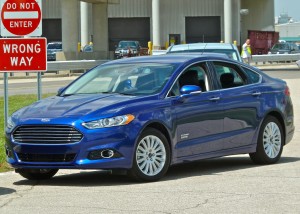
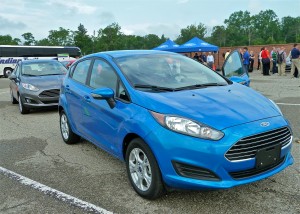
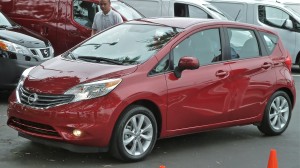
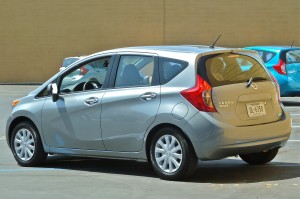
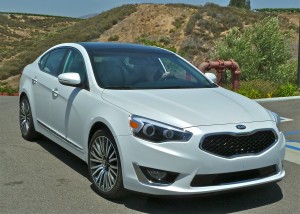
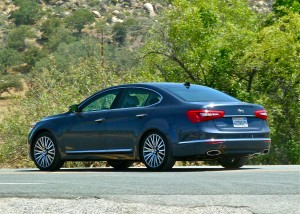
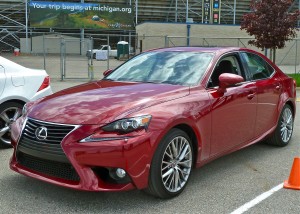
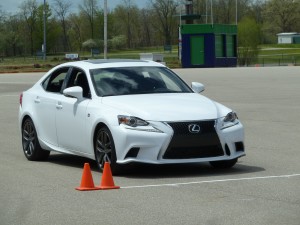
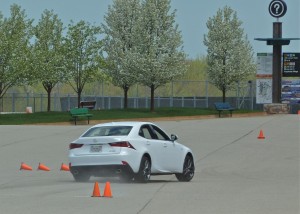
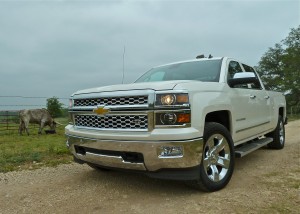
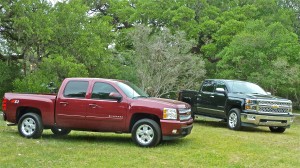
 John Gilbert is a lifetime Minnesotan and career journalist, specializing in cars and sports during and since spending 30 years at the Minneapolis Tribune, now the Star Tribune. More recently, he has continued translating the high-tech world of autos and sharing his passionate insights as a freelance writer/photographer/broadcaster. A member of the prestigious North American Car and Truck of the Year jury since 1993. John can be heard Monday-Friday from 9-11am on 610 KDAL(www.kdal610.com) on the "John Gilbert Show," and writes a column in the Duluth Reader.
John Gilbert is a lifetime Minnesotan and career journalist, specializing in cars and sports during and since spending 30 years at the Minneapolis Tribune, now the Star Tribune. More recently, he has continued translating the high-tech world of autos and sharing his passionate insights as a freelance writer/photographer/broadcaster. A member of the prestigious North American Car and Truck of the Year jury since 1993. John can be heard Monday-Friday from 9-11am on 610 KDAL(www.kdal610.com) on the "John Gilbert Show," and writes a column in the Duluth Reader.